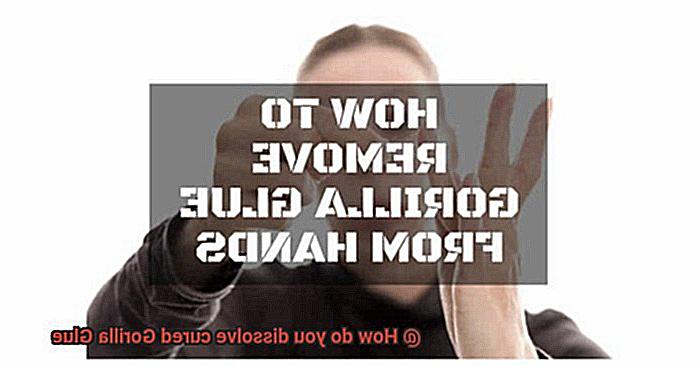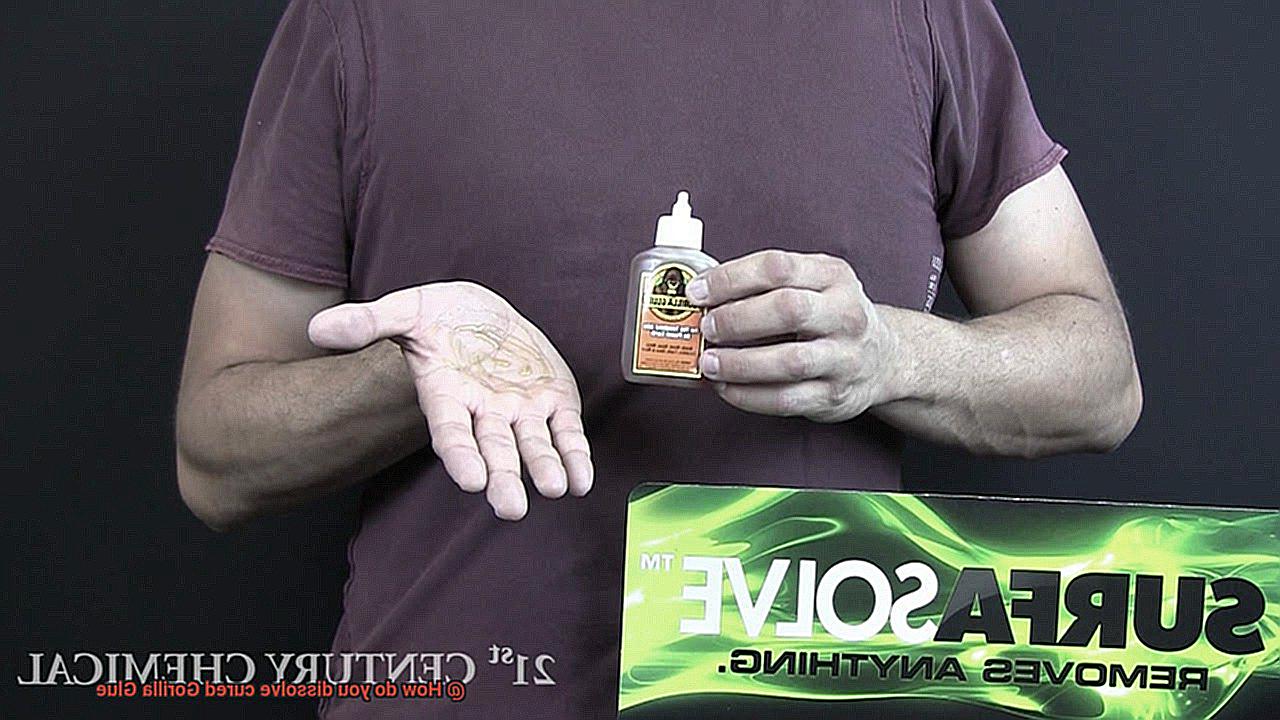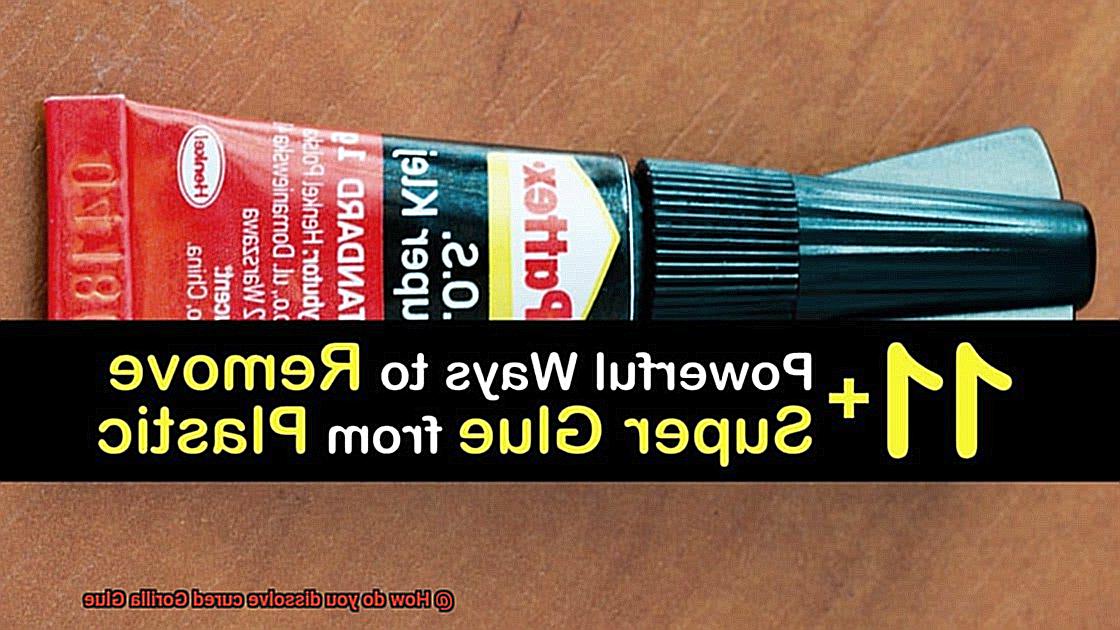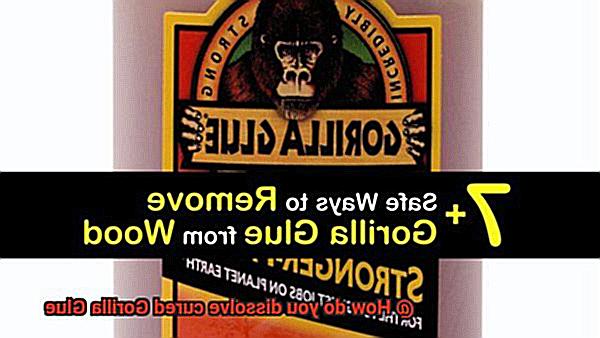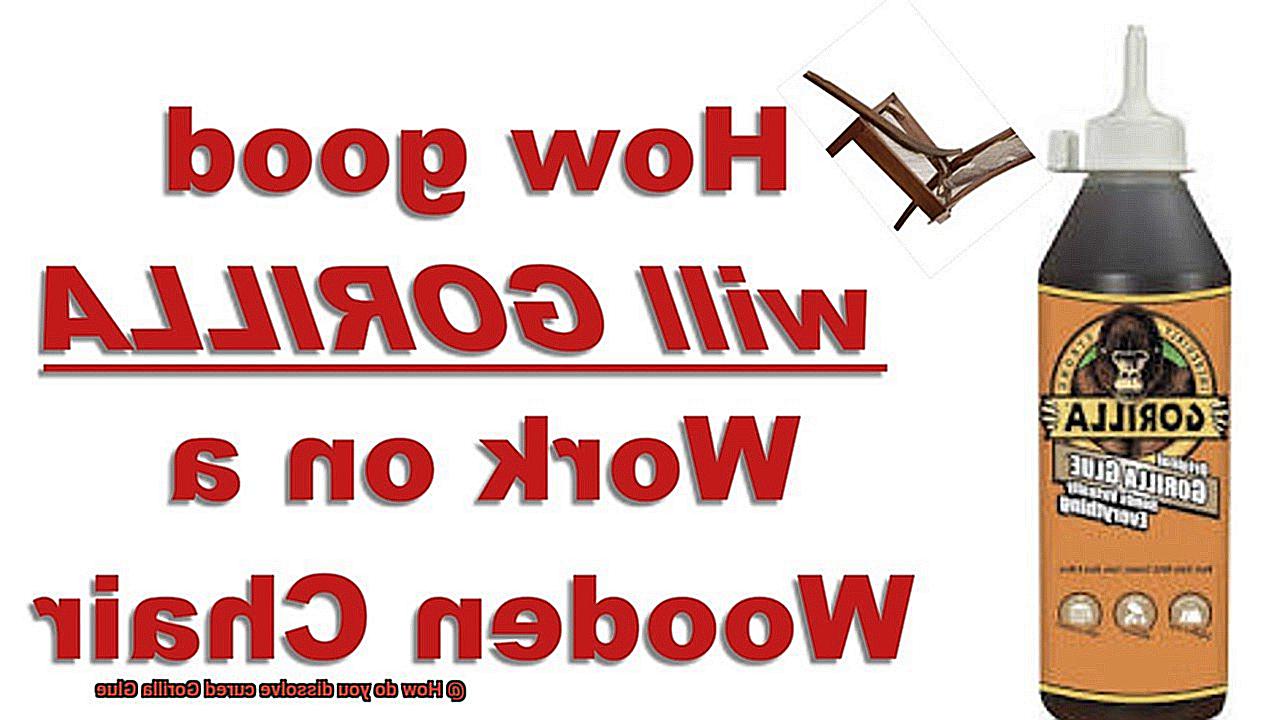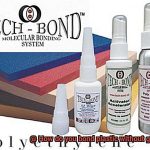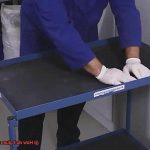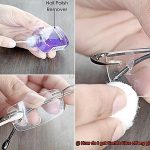Are you stuck in a sticky situation, desperately seeking a way to dissolve cured Gorilla Glue? Well, fret no more because I’ve got your back. Gorilla Glue is a formidable adhesive that can bond just about anything together. While it’s fantastic for projects that require an unbreakable seal, it can be an absolute nightmare if you need to remove it.
Whether you accidentally spilled this super glue on your countertop, clothing, or even your own hands, fear not – there are solutions to conquer this stubborn adhesive. In this blog post, we’re going to explore a range of effective methods to tackle cured Gorilla Glue head-on. So sit tight and get ready to rectify any mishaps that may have occurred.
From natural remedies to store-bought solutions, we’ll cover everything you need to know about effectively dissolving and removing Gorilla Glue. So buckle up, gather your supplies, and let’s plunge into the world of adhesive removal. By the time we’re done here, you’ll be armed with all the knowledge necessary to face any adhesive challenges that come your way.
Remember, when dealing with potent adhesives like Gorilla Glue, it’s crucial to approach the situation with caution. Take your time, follow the right techniques, and always prioritize personal safety. So if you’re ready to bid farewell to cured Gorilla Glue once and for all, let’s embark on this DIY adventure together.
What is Gorilla Glue?
Contents
- 1 What is Gorilla Glue?
- 2 Why is Gorilla Glue So Difficult to Dissolve?
- 3 Acetone Method
- 3.1 Supplies: Acetone: A powerful solvent that disintegrates Gorilla Glue. Well-ventilated area: Work in a space with good airflow to avoid inhaling excessive acetone fumes. Gloves: Protect your hands from irritation and direct contact with acetone. The process involves several steps: Application: Apply a generous amount of acetone to the cured Gorilla Glue. You can use a cotton ball or a cloth soaked in acetone to thoroughly cover the affected area. Waiting time: Allow the acetone to work its magic. The duration will depend on the thickness and adhesion of the glue. Typically, letting it sit for approximately 30 minutes should suffice. Scraping: Gently scrape away the dissolved glue using a plastic scraper or an old credit card. It is crucial to employ non-metallic tools to prevent surface damage. Repeat if necessary: If there are remnants of glue after scraping, reapply acetone and let it sit for a longer period. Stubborn or aged glue may require multiple applications. Cleaning: After successfully removing all traces of Gorilla Glue, thoroughly clean the area. Use a clean cloth dampened with water or mild soap to wipe down the surface and eliminate any residual acetone or glue residue. It is worth noting that the Acetone Method is not suitable for all surfaces. Certain materials such as plastic, vinyl, and specific fabrics can be damaged by acetone. Therefore, it is advisable to test acetone on a small, inconspicuous area beforehand to avoid any potential harm or discoloration. Isopropyl Alcohol Method The Isopropyl Alcohol method is one of the most popular and effective ways to dissolve cured Gorilla Glue. This adhesive solvent is widely available and can be found at your local pharmacy or grocery store. It is important to use Isopropyl alcohol with a high concentration, preferably 90% or higher, as lower concentrations may not be as effective. To begin the process, gather your supplies. You will need a bottle of Isopropyl alcohol, cotton swabs or a soft cloth, and gloves to protect your hands. Next, dampen a cotton swab or cloth with Isopropyl alcohol and gently rub it onto the cured Gorilla Glue. Apply enough pressure to penetrate the glue but be careful not to damage the surface beneath it. Allow the Isopropyl alcohol to sit on the glue for a few minutes. This will give the solvent more time to break down the adhesive properties of the Gorilla Glue. If the glue is particularly thick or deeply embedded, you may need to repeat this process multiple times. Once the glue has softened, use a scraping tool like a plastic scraper or an old credit card to gently scrape away the dissolved glue. Take care not to scratch or damage the surface underneath. If necessary, reapply the Isopropyl alcohol and repeat the scraping process until all traces of Gorilla Glue are removed. After successfully dissolving the cured Gorilla Glue, it is important to clean the surface thoroughly to remove any residue left behind by the Isopropyl alcohol. Use a mild soap and water solution or a household cleaner to wipe down the area and ensure it is free from any remaining adhesive or solvent. It is worth mentioning that while the Isopropyl Alcohol method is generally effective for dissolving cured Gorilla Glue, it may not work on all surfaces or in every situation. It is always recommended to test a small, inconspicuous area first before applying the solvent to a larger area. Additionally, if you are unsure or uncomfortable using this method, it is best to seek professional advice or assistance. Natural Remedies Natural remedies offer a gentle and environmentally-friendly solution for dissolving cured Gorilla Glue. These alternatives to chemical solvents are not only effective but also safer for surfaces and the planet. Let’s explore some of these natural remedies in more detail. One natural remedy is the application of heat. By using a hairdryer or a heat gun on low settings, the glue can be softened, making it easier to remove. However, caution must be exercised to avoid damaging delicate surfaces. Another effective natural remedy is vinegar. Its acidic properties help break down the glue bonds. Soak a cloth or sponge in vinegar and apply it to the glued area. Allow it to sit for a few minutes before gently scraping off the glue with a plastic scraper or fingernails. Repeat the process if necessary. Lemon juice is also known for its adhesive-dissolving properties. The citric acid present in lemon juice helps loosen the glue bonds. Squeeze fresh lemon juice onto the affected area and let it sit for a few minutes. Gently scrub the glue with a soft cloth or sponge, and you’ll notice it starting to come off. Olive oil is yet another natural remedy that can effectively dissolve cured Gorilla Glue. Apply a generous amount of olive oil to the glue and let it sit for several minutes. The oil will penetrate the glue, softening it and making it easier to remove. Use a plastic scraper or your fingers to gently scrape off the softened glue. Rubbing alcohol can also be used as a natural remedy. Soak a cloth or cotton ball in rubbing alcohol and place it over the glued area. After a few minutes, attempt to remove the glue with a plastic scraper or nails. It is crucial to test the rubbing alcohol on a small, inconspicuous area first to ensure it does not cause any damage. Lastly, acetone, commonly found in nail polish removers, can be used as a natural remedy for dissolving cured Gorilla Glue. Dampen a cloth or cotton ball with acetone and place it over the glue. Allow it to sit for a few minutes before attempting to remove the glue. As with rubbing alcohol, it is essential to test acetone on a small, hidden area to avoid any potential damage. When using natural remedies to dissolve cured Gorilla Glue, it is important to follow instructions carefully and exercise patience. Some remedies may require multiple attempts or longer soaking times. Always test the remedy on a small, inconspicuous area before applying it to the entire glued surface to avoid any potential damage. Mechanical Means Mechanical means offer a robust approach to dissolving cured Gorilla Glue, leaving surfaces clean and adhesive-free. This method involves the use of physical force to remove the stubborn glue. One effective mechanical means is scraping with a sharp tool, such as a putty knife or scraper. Carefully assessing the surface beforehand ensures that delicate materials like wood or plastic won’t be damaged during the process. To begin, position the sharp edge of the tool against the edge of the cured Gorilla Glue and apply gentle pressure. Employ back-and-forth or circular motions to gradually loosen the glue from the surface. Be mindful not to inflict scratches or gouges on the material underneath. In more challenging cases, utilizing heat can aid in removing the cured Gorilla Glue. This involves directing heat to the glue using a heat gun or a hairdryer set on high. The application of heat softens the glue, making it easier to scrape off. However, caution must be exercised to avoid excessive heat that could potentially harm certain surfaces or create a fire hazard. While mechanical means may not entirely dissolve cured Gorilla Glue, they significantly reduce its presence on surfaces. This method proves particularly effective when confronted with thick layers of glue or when other solvents fail to dissolve the adhesive. Professional Assistance Professional assistance is a game-changer when it comes to dissolving cured Gorilla Glue. This ultra-strong adhesive is designed to bond materials permanently, making it a formidable opponent. But fear not. There are experts out there who can help you conquer this sticky situation with finesse and expertise. One avenue for professional assistance is to consult with adhesive removal specialists. These contractors or handymen are the cream of the crop when it comes to dealing with tough adhesives. They have the knowledge and experience to assess your specific situation and recommend the best approach for dissolving Gorilla Glue. What’s more, they may have access to specialized solvents or techniques that are not readily available to the general public. But wait, there’s more. You can also reach out directly to the manufacturer of Gorilla Glue itself. This brilliant move allows you to tap into their extensive knowledge base. The company might have a customer service department or technical support team ready to provide expert advice on how to dissolve their product effectively. Since they are the masterminds behind the glue’s chemical composition, they can offer invaluable insights and recommend appropriate solvents or methods for removal. Don’t overlook professionals in related industries like automotive or construction either. These folks frequently encounter situations where Gorilla Glue needs to be dissolved without causing any harm. Mechanics, auto body technicians, or construction contractors are well-versed in tough adhesive removal scenarios. They can provide you with precious advice or even lend their expertise in removing the cured glue safely. When seeking professional assistance, remember to spill all the beans about your sticky predicament. Share relevant details such as the surfaces involved, how long the glue has been cured, and any previous attempts you’ve made to remove it. Armed with this information, professionals can assess your situation accurately and provide tailored recommendations that hit the nail on the head. Caution and Testing Working with adhesives and solvents requires caution and adherence to safety measures. This is especially true when dealing with the formidable bond of cured Gorilla Glue. There are methods to dissolve it; however, proceeding with caution and conducting tests is crucial before applying any solution. Exercise Caution:
- 3.2 Test the Solvent:
- 3.3 The Test Process:
- 3.4 Varying Degrees of Effectiveness:
- 3.5 Mind the Fumes:
- 4 Conclusion
Gorilla Glue, introduced to the market in 1999 by the Gorilla Glue Company, is a powerhouse adhesive renowned for its exceptional strength and versatility. Craftsmen and DIY enthusiasts alike turn to this adhesive for its ability to bond various materials effectively. From wood and stone to metal, ceramics, glass, and even certain plastics, Gorilla Glue is a reliable choice for projects of all kinds.
What sets Gorilla Glue apart is its polyurethane-based composition, containing chemicals known as isocyanates. These chemicals give the glue its incredible strength and durability. When Gorilla Glue encounters moisture, a chemical reaction occurs, causing it to expand and form a robust bond. This expansion allows the glue to fill gaps and create a tight seal between surfaces, ensuring a strong and secure connection.
Not only does Gorilla Glue offer remarkable strength, but it also boasts water-resistance properties once it cures. This makes it suitable for both indoor and outdoor applications, as it can withstand exposure to moisture without compromising its bond. However, extended periods of water exposure can gradually degrade the glue over time.
Gorilla Glue is available in various forms tailored to specific applications. The original Gorilla Glue is celebrated for its versatility, capable of bonding an array of materials together. For quick fixes and small projects, Gorilla Super Glue is an ideal choice with its fast-drying formula that creates an instant bond. And for woodworking projects, Gorilla Wood Glue provides exceptional bonding strength specifically designed for wooden surfaces.
It is crucial to handle Gorilla Glue with care as it is a potent adhesive that can be challenging to remove once cured. However, there are methods you can attempt to dissolve cured Gorilla Glue if necessary. Acetone or isopropyl alcohol can weaken the bond, while vinegar or lemon juice serve as natural alternatives. Mechanical means such as scraping or sanding may also be required. Specialized adhesive removers designed for tough glues like Gorilla Glue are available as a last resort.
Why is Gorilla Glue So Difficult to Dissolve?
Gorilla Glue, a mighty adhesive renowned for its exceptional strength and durability, poses a formidable challenge when it comes to dissolution. Delving into the depths of its chemical composition and properties, we unravel the secrets behind this adhesive’s indomitable nature.
A Chemical Marvel: Polyurethane Adhesive
At the heart of Gorilla Glue lies a polyurethane adhesive, the key to its Herculean bonding capabilities. This adhesive forms robust bonds by undergoing a chemical reaction with moisture in the air or on the surfaces being glued. As the polyurethane molecules cross-link during the curing process, they create a highly durable and rigid structure that resists solvents’ attempts at dissolution.
An Impenetrable Fortress: Moisture Resistance
Once cured, Gorilla Glue becomes an impervious fortress against moisture. It transforms into a waterproof material that can withstand exposure to water and humidity without compromising its adhesive properties. This exceptional moisture resistance adds another layer of protection against dissolution.
Expanding Horizons: Strength in Expansion

Gorilla Glue’s ability to expand when exposed to moisture is both a blessing and a curse. This expansion fills gaps and creates an unyielding bond that defies separation. However, it also poses a challenge for solvents attempting to penetrate the glue. The expansion may prevent solvents from reaching all areas of the adhesive, thwarting their dissolving power.
Viscosity: The Thick Barrier
The high viscosity or thickness of Gorilla Glue further fortifies its resistance to dissolution. The glue forms a thick layer that seals off potential access points for solvents, making it arduous for them to penetrate and break down the adhesive. Solvents find themselves met with an impenetrable barrier that refuses to yield.
The Path Less Traveled: Methods for Dissolution
While Gorilla Glue may present formidable obstacles for dissolving, it is not an invincible foe. There are methods and products available that can help soften or remove cured Gorilla Glue, albeit requiring more time, effort, and specialized tools compared to dissolving other adhesives. It is crucial to follow the manufacturer’s recommendations and safety guidelines meticulously when attempting to dissolve Gorilla Glue. Testing any solvents or removal techniques on a small, inconspicuous area beforehand ensures that no adverse effects occur on the surface or material being treated.
Acetone Method
The Acetone Method is a widely used and effective technique for dissolving cured Gorilla Glue. Acetone, a potent solvent, is employed to break down the chemical bonds in the glue, facilitating its removal or dissolution.
To utilize the Acetone Method, there are essential supplies and precautions to consider:

